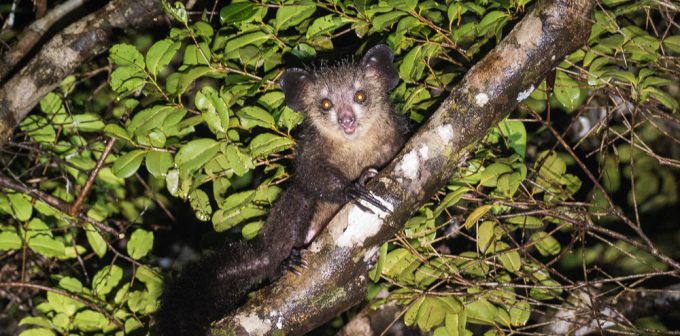
We had an exciting month!
In November we spotted the Aye-Aye twice in our private reserve just a view minutes down the footpath from the dining room.
Well experienced guide Elysee Velomasy figured out where the Aye-Ayes nest was and suggested to us that we should make a new path into that area. To not scare the shy nocturnal lemur we decided to keep this new path a few meters distant from the nest site. After only one day of work the new path was usable for our guests and we all were very excited to see if we would be lucky again.
Most of you may know how rare an Aye-Aye sighting is and that many people travel thousands of miles to increase the chance of seeing it. Wikipedia explains what makes it so special: “It is the world’s largest nocturnal primate, and is characterized by its unusual method of finding food; it taps on trees to find grubs, then gnaws holes in the wood using its forward slanting incisors to create a small hole in which it inserts its narrow middle finger to pull the grubs out. This foraging method is called percussive foraging which takes up 5-41% of foraging time. The only other animal species known to find food in this way is the striped possum. From an ecological point of view the aye-aye fills the niche of a woodpecker, as it is capable of penetrating wood to extract the invertebrates within. […] The aye-aye lives primarily on the east coast of Madagascar. Its natural habitat is rainforest or deciduous forest, but many live in cultivated areas due to deforestation. Rainforest aye-ayes, the most common, dwell in canopy areas, and are usually sighted above 700 meters altitude. They sleep during the day in nests built in the forks of trees.”
We were over the moon with the success we had with this path. We saw the Aye-Aye seven more times in December!
Guest Charles Merriner managed to capture some exiting footage which you can see here
The Aye-Aye was posing for Will Bolsover from NATURAL WORLD SAFARIS for the image above.


